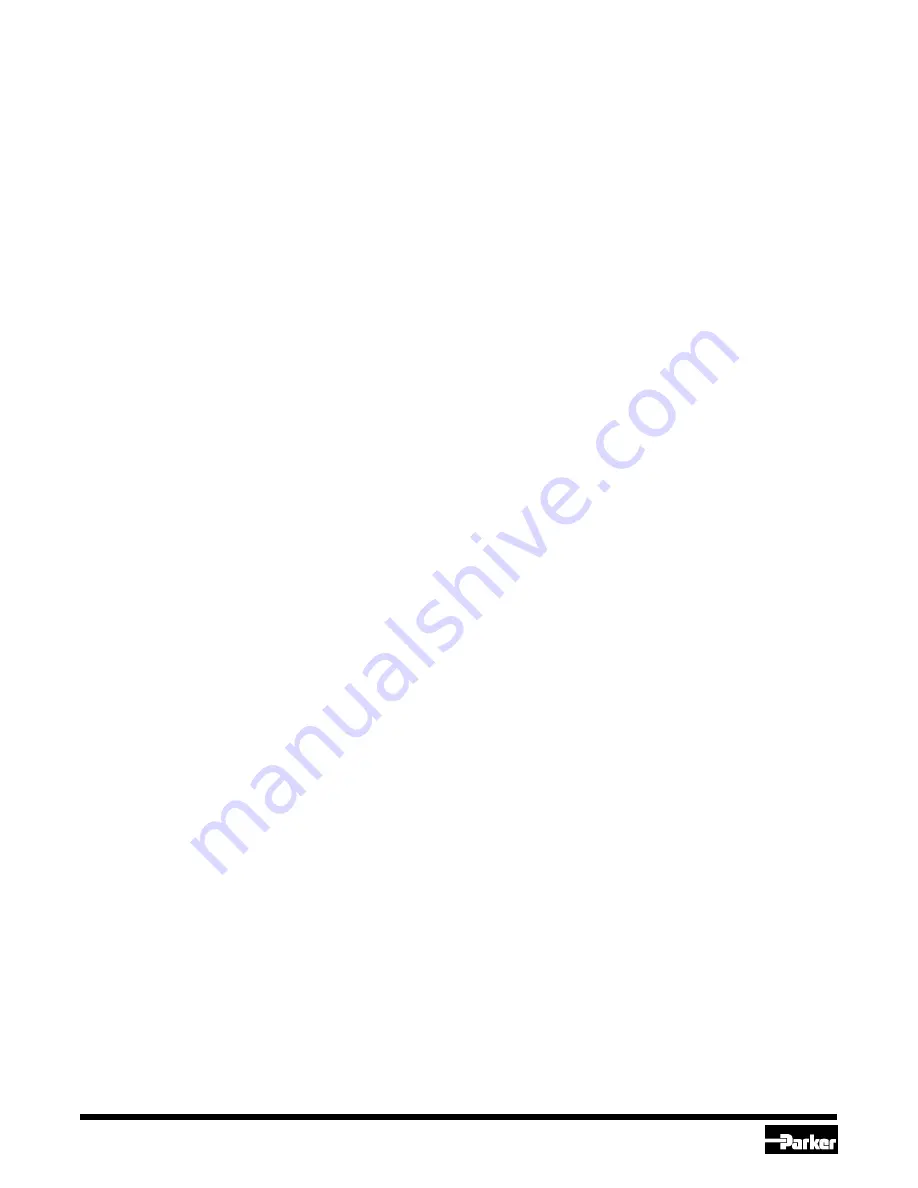
4
Refrigerating Specialties Division
polishing the piston, bore and modulating plug with
fine crocus cloth. Inspect the seating area of the
Modulating Plug 33 for damage or erosion. If dam-
aged it should be replaced. It would be advisable to
replace the entire bottom cap assembly. Inspect all
gaskets and “o” rings for damage and replace where
necessary.
Assembly - When reassembling the valve, all internal
parts should be clean, dry and lightly oiled with
refrigerant oil, except “o” rings. Apply silicone grease
to the “o” rings. Care must be taken especially when
the parts are cold since moisture can condense on
parts and cause rapid rusting. When replacing
gaskets, they should be oiled very lightly with refriger-
ant oil before assembly. Items which require several
bolts to fasten must be tightened uniformly to provide
proper alignment and seating. (See Bolt Torque
Table). Install bottom cap assembly first and tighten in
place. Carefully replace the piston; never try to force
it in place. Align the Adapter Gasket 29 carefully with
the proper holes in the adapter and the valve body
and fasten adapter in place. Before assembling the
bonnet be sure the adjusting Stem 6 is turned all the
way out. Place Gasket 19, Diaphragms 17 and
Gasket 16 in Adapter 28. The raised center of the
diaphragm must be towards the bonnet. Stack
Diaphragm Follower 15, Lower Spring Rest 14,
Spring 13 and Upper Spring Rest 12 on top of
diaphragm and carefully lower bonnet in place and
tighten Screws 11 in place. Tighten Cap Screws 11
evenly. The ideal tightening torque is 11 ft. lbs. (1.5
kg-m). Valve is now ready to be adjusted for normal
operation.
If close coupled strainer is used, it may be cleaned
before putting the valve back in operation. The
regulator must be tested for leaks with refrigerant gas
or other appropriate gas before the system is put into
operation.
After the General Procedure for disassembly, inspect
the Pilot Seat 18 top seating surface for dirt, wear or
damage. Remove seat from valve body and clean,
lap on a flat plate or replace as necessary. Examine
the diaphragm region which contacts the seat sur-
face, look for dirt, heavy scratches or corrosion. If the
diaphragm cannot be easily wiped clean, it should be
replaced. Reassemble the regulator following the
General Procedure.
Maintenance and Service
General Procedure:
Dirt in the system is the greatest single cause of
regulator malfunction. All screens or filters must be
cleaned or replaced when they become dirty. At start
up it is especially important that these items are
cleaned or changed frequently. Cotton bags are
available for 1" - 4" (25mm-100mm) Type RSF
Strainer to improve their ability to remove dirt during
start-up. When the RSF close-coupled companion
strainers are used, maintain according to instruction
in Bulletin DN00-10. Moisture in halocarbon systems
in particular can cause corrosion or form ice, causing
the piston to freeze in position. Filter-driers should be
used and maintained for halocarbon systems.
Before deciding to disassemble a regulator for
servicing, the following investigations should be
made:
Check the manual opening stem; it should be turned
in for automatic operation.
Check the regulator setting to make sure it is properly
adjusted. Turn adjusting screw slowly to see if
regulator responds. Check regulator pressure range;
if wrong, range spring must be replaced.
Check other system components for proper opera-
tion.
Check hand valves in the system to make sure they
are open or closed as required and the system is
receiving liquid or gas as the case may b
e.
Before disassembly of regulator, make certain that all
refrigerant has been removed (pumped out) from the
regulator and its companion strainer where one is
used. Read Safety Bulletin RSBCV.
Safe Operation (See also Bulletin RSBCV)
People doing any work on a refrigeration
system must be qualified and completely
familiar with the system and the Refrigerat-
ing Specialties Division valves involved, or
all other precautions will be meaningless.
This includes reading and understanding
pertinent Refrigerating Specialties Division
Product Bulletins and Safety Bulletin
RSBCV prior to installation or servicing
work.
Where cold refrigerant liquid lines are used, it is
necessary that certain precautions be taken to avoid
damage which could result from liquid expansion.
Temperature increase in a piping section will cause
high pressure due to the expanding liquid which can
possibly rupture a gasket, pipe or valve. All hand








